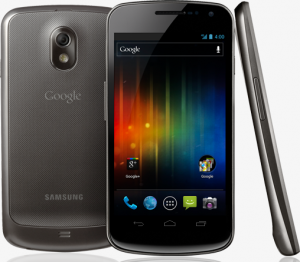Samsung and its technology partner Google has unveiled GALAXY Nexus, an exciting Smartphone using on Android 4.0 Ice Cream Sandwich, the latest release of the Android platform for the first time in the world. GALAXY Nexus is powered by an 1.2GHz dual core processor, other features includes a 4.65″ HD Super AMOLED 720p resolution display technology.
GALAXY Nexus comes with unique features such as software navigation buttons, something exclusively designed for an android phone. The lock screen, home screen, phone app, and everything in between has been reworked and redesigned to make GALAXY Nexus look simple, beautiful, and useful.
This new android will provide quality user interface with improved multi-tasking, notifications, Wi-Fi hotspot, NFC support and a full web browsing experience.
GALAXY Nexus promises a “pure Google,” experience, which enables its patrons to be the first ones to receive software upgrades and new applications as they become available. Further it is packed with a series of applications such as Google Mobile services, including: Android Market, Gmail, and Google Maps 5.0 with 3D maps and turn-by-turn navigation, Google Earth, Movie Studio, YouTube, syncing with Google Calendar, and a redesigned Google app. Another key feature that differentiate Galaxy Plus is Unlock feature that deploys facial recognition to unlock your phone. The technical specification of Galaxy Nexus are detiled below:
The technical specification of Galaxy Nexus are detiled below:
Size – 135.5 x 67.94 x 8.94mm, 135g
Processor – 1.2 GHz Dual Core Processor
1GB(RAM) 16GB/ 32GB Internal memory
Display – 4.65″ 1280X720 HD Super AMOLED
OS – Android 4.0, Ice Cream Sandwich
Camera – Main : 5 MP AF with LED Flash with zero shutter lag
Front : 1.3MP for Video Call
Video – 1080p Full HD Video@ 30fps
3.5mm Ear Jack
Google Maps 5.0 with 3D maps and turn-by-turn navigation
Bluetooth technology v 3.0, NFC
USB 2.0
Wi-Fi 802.11 a/b/g/n (2.4GHz/ 5GHz)
Accelerometer, Compass, Gyro, Light, Proximity, Barometer
Battery – Li-on 1,750 mAh
GALAXY Nexus will be available in the U.S, Europe, and Asia beginning in November and gradually rolled out to other global markets.